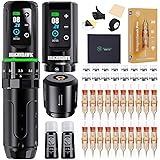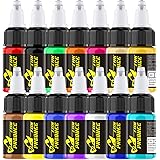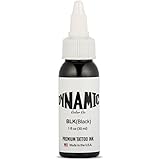In a world increasingly dominated by polished digital precision, there exists a growing yearning for the authentic, the handmade, and the truly unique. This sentiment extends profoundly into the realm of design, where the charm of bespoke elements can elevate a project from good to unforgettable. As skilled creatives, many of us strive to imbue our work with a distinct signature, something that clearly differentiates it from the vast ocean of digital output. This pursuit often leads us to explore specialized disciplines like hand-lettering, a skill that, when masterfully employed, becomes an invaluable asset for any artist aiming for commercial success. The accompanying video offers a compelling look into crafting your very own unique hand-lettering style, and this article will delve deeper into the strategic advantages and practical applications of this essential design competency.
The Imperative of a Unique Hand-Lettering Style in Modern Design
Developing a signature hand-lettering style transcends mere artistic expression; it is a strategic business decision that significantly enhances your professional design toolkit. In today’s competitive landscape, where artificial intelligence can generate visually appealing content with increasing sophistication, the demand for genuinely human-crafted elements has surged. A truly unique hand-lettering style acts as a powerful differentiator, signaling authenticity and bespoke quality that algorithmic creations cannot replicate.
As highlighted in the video by Liz Kohler Brown, a distinct lettering style opens doors to numerous commercial avenues. Consider the impact of custom fonts licensed to global companies, bespoke lettering for top-tier clients like Bloom and Wild – the UK’s number one online florist – or winning competitive design tenders such as those on Minted. These examples underscore how a well-developed, personal visual lexicon can become a highly sought-after brand asset, providing both significant creative satisfaction and substantial revenue streams for designers.
Beyond Aesthetics: The Commercial Value of Bespoke Lettering
The commercial utility of owning your hand-lettering intellectual property cannot be overstated. When a designer cultivates a style that is recognizably theirs, they create a proprietary visual asset. This asset can be deployed across a diverse range of products and services, from digital fonts sold on platforms like Creative Market to physical items such as greeting cards, calendars, and even apparel available via Print-on-Demand (POD) services. This versatility is crucial for any creative entrepreneur looking to diversify their income and expand their market reach.
Moreover, a cohesive lettering style contributes directly to building a strong brand identity. For clients and collaborators, consistency in bespoke typography reinforces their brand messaging and fosters a memorable user experience. This level of curated visual communication commands higher perceived value and often leads to more lucrative commissions and licensing opportunities, solidifying the artist’s position as a distinctive voice in their niche.
Cultivating Inspiration: The Power of Vintage References
The foundation of any truly original creation often lies in a deep understanding and reinterpretation of existing aesthetics. For hand-lettering, the past offers an inexhaustible wellspring of inspiration. As Liz demonstrates, drawing from vintage sources like old magazines, advertisements, and historical journals provides a rich tapestry of typographic forms and design philosophies. These artifacts capture a certain “funkiness” or “grittiness” that is highly appealing and difficult to engineer from scratch.
When approaching vintage inspiration, the objective is not direct replication but rather a thoughtful synthesis. Instead of tracing, designers are encouraged to deconstruct and reconstruct letterforms, borrowing elements, proportions, and stylistic quirks. This iterative process allows for the absorption of historical design principles while simultaneously infusing the work with a contemporary, personal touch. The challenge of incomplete alphabets in vintage scraps, for instance, forces creative problem-solving, pushing artists to invent letters that align with the chosen stylistic framework, thereby strengthening originality.
Strategic Deconstruction for Distinctive Letterforms
To effectively leverage vintage inspiration, a systematic approach to deconstruction is beneficial. Begin by identifying what specific attributes draw you to a particular vintage piece. Is it the weight of the strokes, the serifs or sans-serif terminations, the baseline variations, the unique counter spaces, or perhaps an Art Nouveau-inspired flourish? Pinpointing these characteristics helps in building a cohesive visual lexicon for your new style.
For example, if a vintage advertisement features numbers with distinct circular “balls” or specific flairs, these micro-elements can be extracted and consistently applied across your entire alphabet. This method ensures that while the inspiration is historical, the resulting unique hand-lettering style remains fresh and proprietary. It is this meticulous attention to detail and consistent application of stylistic elements that transforms a simple sketch into a professional, scalable design asset.
The Procreate Workflow: Crafting Your Letter Sheet
The video effectively showcases a practical, accessible workflow using Procreate for developing a letter sheet – a comprehensive guide to your new hand-lettering style. This digital canvas provides an ideal environment for experimentation and refinement without the constraints of traditional media. Establishing clear letter guides, as demonstrated, is paramount for maintaining consistency in height, baseline, and overall proportion across all characters.
The process begins with foundational sketching, focusing on capturing the overall “feel” and characteristic shapes derived from your vintage inspiration. Here, embracing looseness and imperfection is not a flaw but a core tenet of creating that coveted handmade aesthetic. Rather than striving for robotic precision, the goal is to infuse each character with a life-like, tactile quality that stands in stark contrast to generic digital fonts.
Building an Alphabet Systematically
A key efficiency technique in Procreate, as observed, involves reusing and manipulating existing shapes. Why redraw an “I” bar when it can be duplicated and adapted for “H,” “K,” or “T”? Similarly, the foundational “O” shape can be duplicated and edited to form “C,” “G,” or “Q.” This modular approach not only accelerates the design process but also inherently builds in the visual consistency that defines a strong lettering style. Designers can create a full alphabet from a limited set of core shapes, such as straight bars and circular forms, greatly reducing the perceived effort.
The iterative nature of this workflow allows for constant refinement. Initial sketches are made semi-transparent, serving as underlays for more defined outlines. This layering process facilitates adjustments, such as rounding sharp corners or tweaking stroke weights, ensuring that the evolving style adheres to the desired aesthetic. This method, combined with the ability to easily duplicate and transform elements, democratizes the font design process, making it accessible even for those without formal typographic training.
Monetization Avenues and Strategic Integration
Once a unique hand-lettering style is meticulously crafted, the journey transitions from creation to commercialization. The possibilities for integration into various products and platforms are extensive. For many creatives, this involves transforming their letter sheets into digital fonts for sale or licensing, or applying them directly to commercial products. The video highlights several successful avenues, illustrating the tangible returns on this creative investment.
Maximizing Reach with Print-on-Demand (POD) and Licensing
Print-on-Demand services offer an excellent low-risk entry point for artists looking to sell physical products adorned with their lettering. By partnering with POD providers, designers can create a wide array of products – from greeting cards and art prints to apparel and home goods – without managing inventory, production, or shipping logistics. This allows artists to focus on what they do best: creating art. Liz’s experience, having invested thousands in vetting POD providers, underscores the importance of selecting high-quality partners to ensure customer satisfaction and brand integrity.
Licensing is another powerful revenue stream. By offering the rights to use your unique lettering style or font to other businesses (e.g., Minted, app developers), you can generate passive income. This strategy requires careful management of intellectual property, ensuring that licensing agreements are clear and non-exclusive unless specifically intended. A key to attracting licensing opportunities is strong Search Engine Optimization (SEO). Incorporating descriptive keywords like “vintage advertisement font,” “road trip script,” or “funky handmade lettering” into your asset descriptions on platforms like Creative Market and your portfolio site significantly increases discoverability. This proactive SEO approach transforms your unique hand-lettering style into a searchable, findable asset that can connect with a global audience of potential buyers and licensors.
Beyond Calligraphy: Your Lettering Style Questions Answered
What is a unique hand-lettering style?
A unique hand-lettering style is a distinct, personalized way of drawing letters by hand. It helps your creative work stand out as authentic and truly unique.
Do I need calligraphy skills to create my own hand-lettering style?
No, you do not need calligraphy skills to create a unique hand-lettering style. This guide focuses on methods accessible to beginners without formal training.
Why is it important for designers to have a unique hand-lettering style?
Having a unique hand-lettering style acts as a powerful differentiator, signaling authenticity and bespoke quality in a digital world. It can open doors to commercial opportunities like designing for greeting cards, fonts, and other products.
Where can I find inspiration for creating my own hand-lettering style?
The past offers a great source of inspiration; look at vintage materials like old magazines, advertisements, and historical journals. These sources provide a rich variety of typographic forms and design philosophies.
What software is recommended for creating a hand-lettering style digitally?
Procreate is highlighted as an ideal digital canvas for developing your unique hand-lettering style. It allows for easy experimentation and refinement without the constraints of traditional media.











